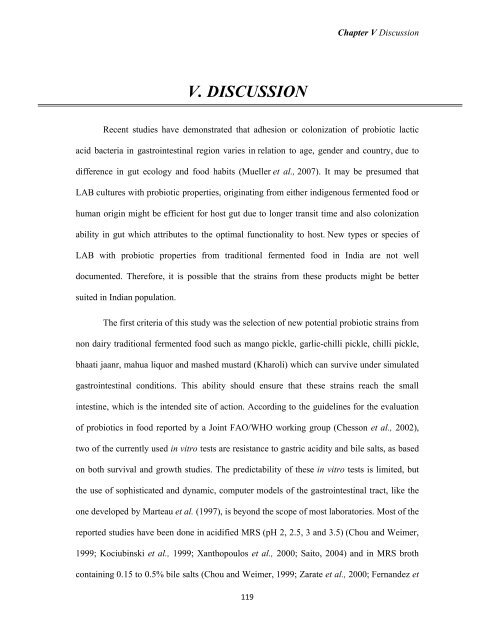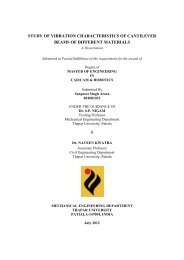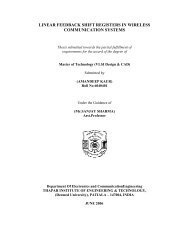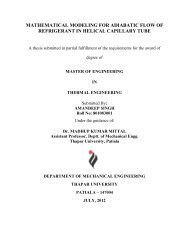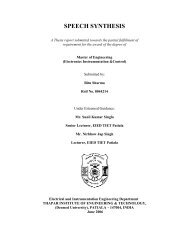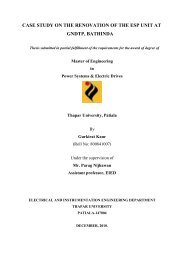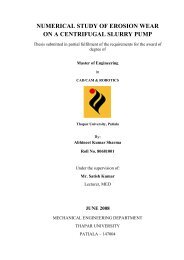from indigenous fermented foods and human gut ... - Thapar University
from indigenous fermented foods and human gut ... - Thapar University
from indigenous fermented foods and human gut ... - Thapar University
Create successful ePaper yourself
Turn your PDF publications into a flip-book with our unique Google optimized e-Paper software.
V. DISCUSSION<br />
119<br />
Chapter V Discussion<br />
Recent studies have demonstrated that adhesion or colonization of probiotic lactic<br />
acid bacteria in gastrointestinal region varies in relation to age, gender <strong>and</strong> country, due to<br />
difference in <strong>gut</strong> ecology <strong>and</strong> food habits (Mueller et al., 2007). It may be presumed that<br />
LAB cultures with probiotic properties, originating <strong>from</strong> either <strong>indigenous</strong> <strong>fermented</strong> food or<br />
<strong>human</strong> origin might be efficient for host <strong>gut</strong> due to longer transit time <strong>and</strong> also colonization<br />
ability in <strong>gut</strong> which attributes to the optimal functionality to host. New types or species of<br />
LAB with probiotic properties <strong>from</strong> traditional <strong>fermented</strong> food in India are not well<br />
documented. Therefore, it is possible that the strains <strong>from</strong> these products might be better<br />
suited in Indian population.<br />
The first criteria of this study was the selection of new potential probiotic strains <strong>from</strong><br />
non dairy traditional <strong>fermented</strong> food such as mango pickle, garlic-chilli pickle, chilli pickle,<br />
bhaati jaanr, mahua liquor <strong>and</strong> mashed mustard (Kharoli) which can survive under simulated<br />
gastrointestinal conditions. This ability should ensure that these strains reach the small<br />
intestine, which is the intended site of action. According to the guidelines for the evaluation<br />
of probiotics in food reported by a Joint FAO/WHO working group (Chesson et al., 2002),<br />
two of the currently used in vitro tests are resistance to gastric acidity <strong>and</strong> bile salts, as based<br />
on both survival <strong>and</strong> growth studies. The predictability of these in vitro tests is limited, but<br />
the use of sophisticated <strong>and</strong> dynamic, computer models of the gastrointestinal tract, like the<br />
one developed by Marteau et al. (1997), is beyond the scope of most laboratories. Most of the<br />
reported studies have been done in acidified MRS (pH 2, 2.5, 3 <strong>and</strong> 3.5) (Chou <strong>and</strong> Weimer,<br />
1999; Kociubinski et al., 1999; Xanthopoulos et al., 2000; Saito, 2004) <strong>and</strong> in MRS broth<br />
containing 0.15 to 0.5% bile salts (Chou <strong>and</strong> Weimer, 1999; Zarate et al., 2000; Fern<strong>and</strong>ez et


